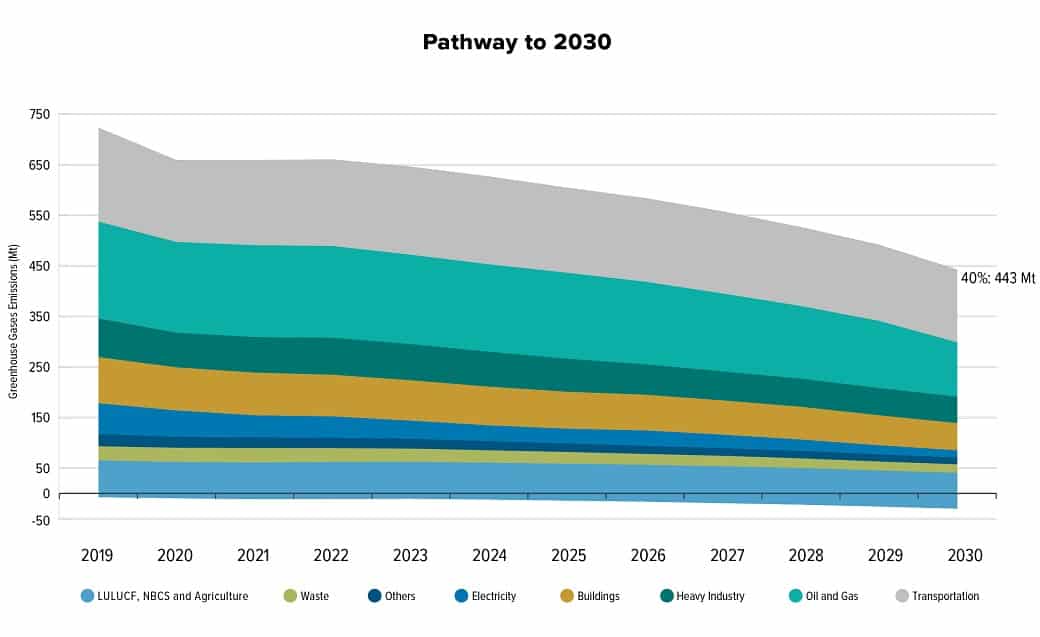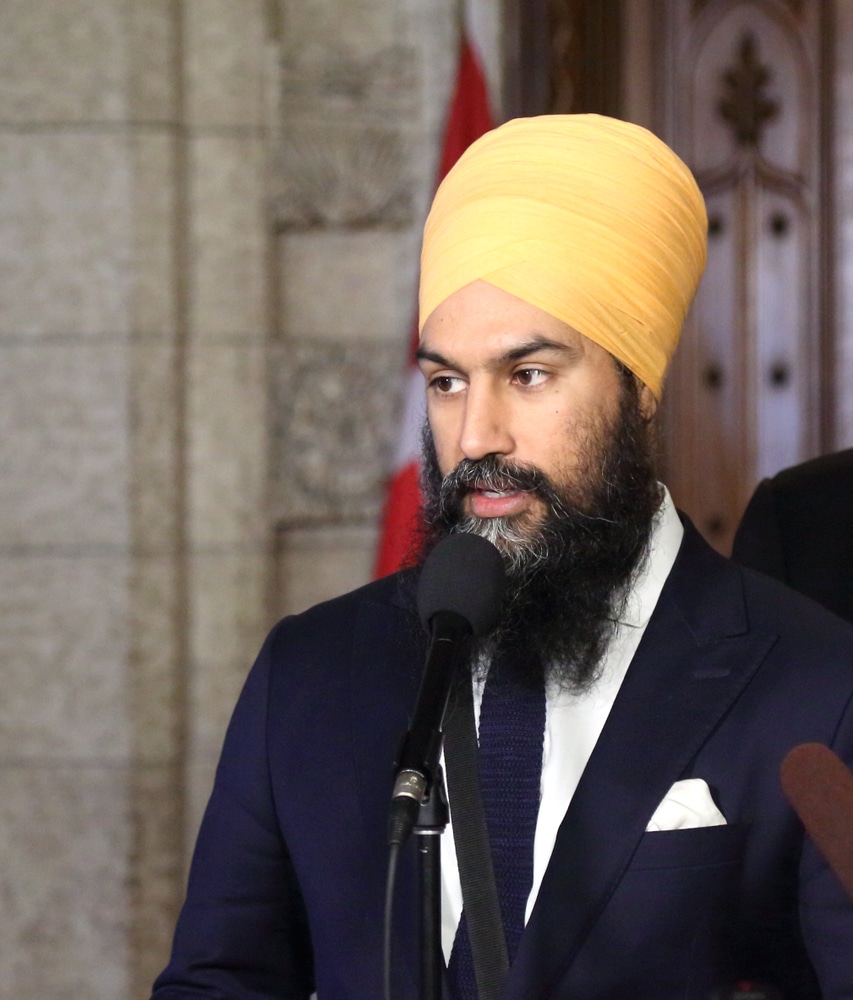Canada’s NDP Leader Jagmeet Singh advanced a motion in the House of Commons, keeping the carbon pricing debate alive by urging Prime Minister Justin Trudeau to permanently remove the GST (Federal Goods and Services Tax) from all forms of home heating.
Meanwhile, concerns were also raised about missing Canada’s emission reductions target as revealed by a recent audit. The debate between the two parties on carving-out the carbon tax seems to impact the nation in reaching its climate goals.
A ‘Flip-Flop’ Stance
NDP’s move, focused on affordability, aligns with the New Democrats’ ongoing advocacy but has gained renewed attention. That is due to the recent controversies surrounding the Liberals’ exemptions for home heating oil and rural rebate enhancements.
Singh’s proposal is non-binding, meaning it won’t compel the government to act even if it passes. It aims to achieve three major objectives:
- Remove the GST from all home heating forms,
- Ensure easy access to eco-energy retrofits and heat pumps for low-income and middle-class Canadians
- Fund these initiatives through a tax on the excess profits of major oil and gas corporations.
The motion was debated with the vote expected later in the week.
Despite the NDP’s support for the Conservative carbon tax motion, there’s uncertainty about the reciprocity of support from the Conservative caucus for the NDP’s current motion.
During the House debate, Conservative Leader Pierre Poilievre criticized the NDP for “yet another flip-flop” in their stance on the tax issue.
Singh responded by challenging the corporate-controlled Conservatives to support the motion. He further highlighted their priorities in protecting big oil and gas profits over helping Canadians lower their costs and combat the climate crisis.
The Liberals have consistently advocated for carbon pricing based on its universal application. The purpose of the tax is to discourage planet-warming emissions by making them more costly to bear. This policy would allow Canadians only to pay based on how much carbon they’re releasing into the air.
The current administration, for example, charges $65/tonne of CO2. That translates to 14 cents for each liter of gasoline, 10 cents for propane, and $145/tonne of high-grade coal.
‘Ax The Tax’
The tax exemption, a.k.a. ‘carve-out’, further complicated the Liberals’ established stance that any inequalities resulting from the tax could be corrected with targeted rebates.
The concept means that all Canadians would face the same fuel prices. However, those with lower incomes or residing in rural areas without public transportation would receive a proportionately larger portion of the refund.
With the exemption, the Liberals provided a pardon for an exceptionally polluting fossil fuel that could predominantly benefit the wealthy. That’s according to the findings of an economist, noting that it would favour “households with large houses MORE than low-income households living in higher density homes”.
As for the Conservatives, abolishing the tax is one of their major lobbies. The party has mentioned the never-heard-of phrase in over 150 years in the House of Commons’ transcripts – ‘ax the tax’ – more than 100 times.
Meanwhile, the Senate also advanced Bill C-234, suggesting further exemptions in the carbon price for specific fuels used in farming. The bill, if passed, would create exemptions for natural gas and propane as qualifying farming fuels from the carbon tax.
Sen. Pat Duncan particularly noted by asking that:
“Will allowing this rebate and passing Bill C-234 make a tremendous difference to Canada reaching the climate change goals?”
That question points to another significant result of the federal environment commissioner’s recent audit. That is Canada’s plan to achieve its 2030 greenhouse gas emissions targets falls short of the mark.
Missing The Target
Canada’s emission reductions plan, published last year, is a requirement under the federal net zero accountability law passed in 2021. The following chart shows Canada’s 2030 Emissions Reduction Plan per sector.
 According to the audit, while the plan represents an improvement over previous versions, it still lacks in critical areas. Key policies have experienced delays, the functionality of established measures remains unclear, and the country is several million tonnes away from its emissions goal.
According to the audit, while the plan represents an improvement over previous versions, it still lacks in critical areas. Key policies have experienced delays, the functionality of established measures remains unclear, and the country is several million tonnes away from its emissions goal.
The auditor, Jerry DeMarco, emphasized the urgency of reversing Canada’s GHG emission trajectory, stressing that the issue demands immediate attention.
- The nation aims to reduce emissions by 40% – 45% from 2005 levels by 2030. That calls for a ⅓ reduction in Canada’s current emissions by the same period.
However, the measures outlined in the plan are projected to achieve just a quarter of the reduction by decade’s end. That happens due to relying on government modelling which DeMarco referred to as “overly optimistic assumptions”.
Though the plan identifies more than 80 policies and programs, less than 50% have set timelines for implementation. In fact, only 4 of them have specific targets for emissions reduction.
- In comparison with other G7 nations, Canada’s emissions have only decreased by around 8% compared to 2005 levels. As such, the country is the least successful in cutting emissions within the group.
In response to the findings, Environment Minister Steven Guilbeault acknowledged the existing gap between the target and necessary policy actions. He pledged the government’s commitment to accelerating efforts and improving transparency in its modelling to show how it intends to achieve the 2030 target.
Guilbeault also hinted at positive developments in the upcoming progress report due before the year’s end.
The NDP’s motion to scrape the tax from home heating intensifies the debate on carbon pricing and emission reductions in Canada, underscoring the challenges faced in meeting the nation’s climate goals.

